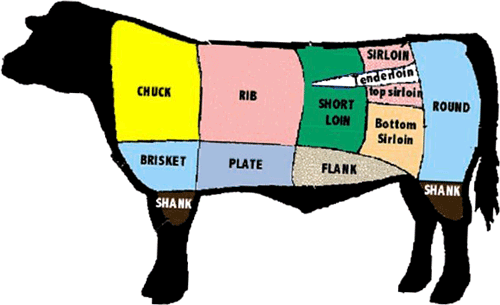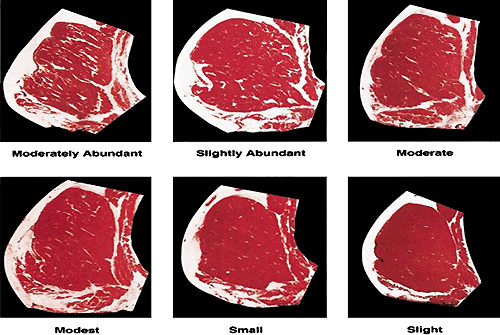- Return to Article Of The Month index
Eat More Beef
August 2006
Sonja C. Crawford - Hendry County Extension, 4-H Coordinator/Livestock Agent II
The primary purpose of raising cattle is not only to provide a monetary income to producers but to produce a quality product for human consumption with the secondary purpose aiding in the use of 99% of the carcass utilized in the development of industrial products, health products, food products, as well as household products.
Beef is a highly consumed meat in the United States averaging 67 pounds per person per year and is considered to be Americans' number one source of protein as well as natures best tasting multivitamin. Moreover, it is one of the most nutrient-rich foods that provides energy for an active lifestyle. A healthy serving of lean beef is about three ounces and contains an excellent source of protein, zinc, vitamin B12, selenium, and phosphorus coupled with a good source of niacin, vitamin B6, iron and riboflavin. These nutrients are essential to promote growth, maintenance, and repair of its tissues. The body is not able to make essential nutrients in sufficient quantity to meet physiological need.
Concern about calories, fat, and cholesterol influence consumers' choices. These changes affect who eats beef and what cuts consumers' may prefer. The average person consumes approximately 58 pounds per person of fresh beef with ground beef being most popular and 9 pounds per person of processed beef. Lean beef can be consumed from 19 retail cuts of beef that are leaner than a skinless chicken thigh that meet United State Department of Agriculture's Labeling Guidelines for lean.
Furthermore, knowing the part of the carcass from which a retail cut is from is a good indicator of the relative tenderness of the cut and the cookery method to use in preparing the cut, such as dry or moist cookery. The primal cut name is identified on the meat label to help consumers select the cut that best fits the consumers' needs. For example, the shoulder, referred to as the chuck in meat terminology, is a highly exercised part of the animal, and contains greater amounts of connective tissue; therefore, would not be as tender as cuts from the loin or rib.
Beef Cuts

Purchasing beef at the grocery store or the local meat market, one will find that beef is graded for quality and is most likely marked as Prime (Moderately Abundant, Slightly Abundant), Choice (Moderate, Modest, Small), or Select (Slight). Prime cuts are mainly sold to fine restaurants and specialty meat markets. Most grocery stores offer a selection of Choice and Select cuts. Quality refers to the palatability characteristics, such as tenderness, juiciness, and flavor. The United States Department of Agriculture's Agriculture Marketing Service performs quality grading at the slaughtering facility using meat grading standards. The quality grade is determined by considering the degree of intramuscular fat or marbling in the cut surface of the ribeye in relation to the maturity of the carcass viewed along the vertebrae of the back bones.
Beef fulfills the body with important essential nutrients to maintain a healthy body. Many of the most popular cuts of beef meet government guidelines for lean. Beef is a healthy meat product when eaten in moderation. A reasonable serving of cooked beef is approximately three ounces. Many kitchens are not equipped with food scales. The rule of a thumb to use for a reasonable serving of beef is about the size of a deck of cards. To select lean beef from the fresh meat case look for loin or round in the name and purchase ground beef that is 90% lean or higher. To reduce the amount of fat, trim away any excess fat located around the steak or roast, especially in the tail area, and use low-fat cooking methods such as broiling, roasting or grilling.
Beef Quality Grades


